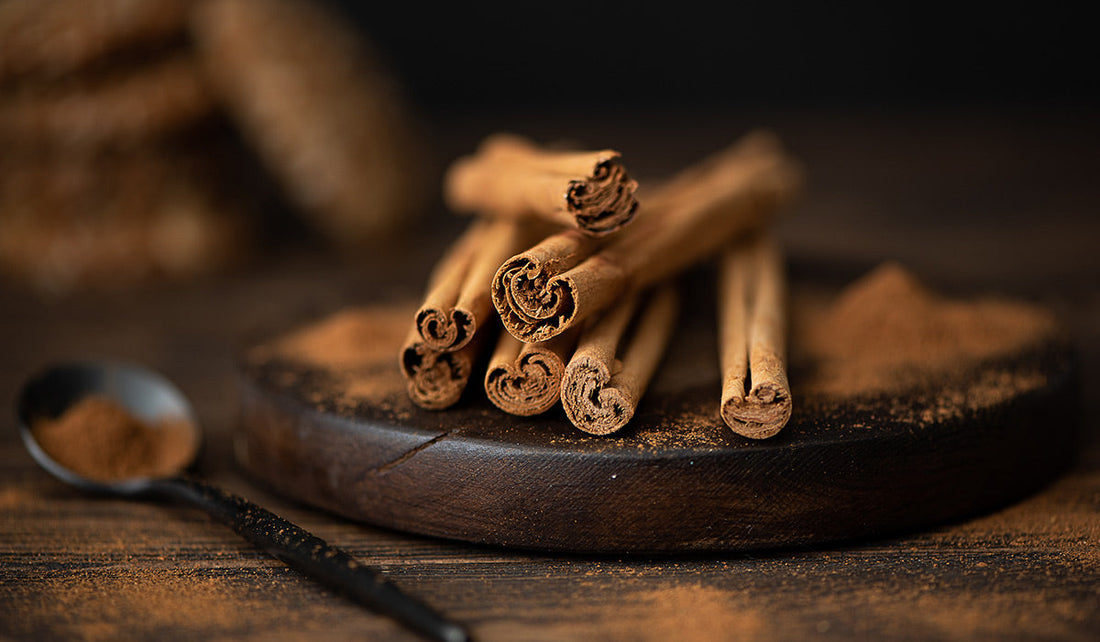
Not All Cinnamon is the Same
Share
Cinnamon is a fragrant spice derived from the inner bark of Cinnamomum trees. It is known for its sweet, earthy and somewhat spicy flavour profile. It is one of the most used spices in World with a market size of over AUD 1.5 Billion (although some records showing a market size upwards of AUD 2 Billion).
History of Cinnamon
Cinnamon carries a rich history that dates back to Ancient Egypt, where it was used in food, perfumes, embalming and sacred rituals. The Romans valued this luxury spice as a commodity more precious than gold.
Later, in between the 16th and 18th centuries, the Dutch and Portuguese fought to control the cinnamon trade of Sri-Lanka due to Sri-Lanka’s monopoly of cinnamon at the time.
Present Day
There are several varieties of Cinnamon. The most well-known being Ceylon Cinnamon (Cinnamomum Zeylanicum/Cinnamomum Verum), Cassia Cinnamon, and Saigon Cinnamon. Each has its own distinct flavours, aromas, and characteristics, making them unique in culinary and medicinal applications.
As the name suggests Ceylon Cinnamon (A.K.A True Cinnamon) is indigenous to Sri-Lanka (formerly known as Ceylon). It is world renowned for its mild, sweet and citrusy flavours. Ceylon Cinnamon Quills are thinner than other varieties and more delicate with multiple thin layers within the quills. This helps distinguish Ceylon Cinnamon from the cheaper, lesser sought after varieties.

Image 1: Close up of Ceylon Cinnamon quills showing multiple thin layers within the quills
Ceylon Cinnamon also has much lower coumarin levels making it safe for regular consumption unlike Cassia and Saigon Cinnamon. Although incredibly versatile, Ceylon Cinnamon is mainly used in high-end culinary recipes, teas, and medicinal uses.
Cassia Cinnamon (Cinnamomum Cassia) is the most common commercial type of cinnamon in the market. Originating from China and Indonesia, this variant has a strong, spicy flavour with a slight bitterness to it. Cassia Cinnamon quills appear to be significantly thicker and harder with single layered quills. This allows consumers to differentiate between Cassia and Ceylon cinnamon. Cassia cinnamon has high Coumarin levels, therefore medical professionals discourage consumers from regular consumption of this type of cinnamon. Mainly due to liver toxicity that can occur as a result of over consumption of Cassia cinnamon. It is used in common baked goods, spice blends, and commercially available cinnamon powders. It is cheaper than Ceylon Cinnamon and more readily available.
Saigon Cinnamon (Cinnamomum Loureiroi) is a variant of cinnamon that originates from Vietnam. Saigon Cinnamon is widely considered to have the spiciest flavour profile with a hint of sweetness. Coumarin levels of Saigon cinnamon are higher than Ceylon Cinnamon but lower than Cassia cinnamon. It is usually used in Vietnamese soup noodles (Pho) , and strong grocery store spice blends.

Image 2: Side by side comparison of Ceylon Cinnamon (Left) vs Cassia Cinnamon (Right)
Why should I purchase Ceylon Cinnamon over cheaper Cinnamon alternatives?
Although all varieties of cinnamon have their place in the world, Ceylon Cinnamon is the most sought after type of Cinnamon due to its myriad of health benefits and lower levels of coumarin, along with its sophisticated flavour profile. Due to its higher price tag in comparison to Cassia and Saigon Cinnamon, Ceylon cinnamon is considered a luxury spice. This is why it is frequently used in gourmet culinary applications.
Studies have proved that Ceylon Cinnamon can help with blood sugar regulation and diabetes management.
It can lower blood sugar levels after meals and can also lower fasting blood glucose. Ceylon Cinnamon has also shown to reduce LDL cholesterol (bad cholesterol), while increasing HDL cholesterol (good cholesterol). Experts believe that this is due to its ability to increase insulin sensitivity in cells (Insulin is responsible for glucose uptake in cells, thereby, reducing blood glucose levels). Ceylon Cinnamon also contains more antioxidants than Cassia Cinnamon, thus preventing cellular harm from reactive oxygen species.
